From the 11th Century, South Lancashire was divided into six districts known as ‘Hundreds’ or ‘Wapentakes’. As the Whiston area at that time was part of the parish of Prescot, it appeared as such on the district maps of the time within the West Derby Hundred.
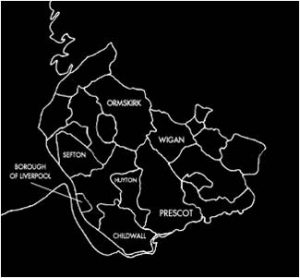
Early references show the township as Quitstan (1245), Wystan, Quystan (1278), Whystan, Whytstan, Whyghstan (1292) and Quistan (1346), eventually reaching its present spelling of Whiston around 1355.
Whiston is located 1 1/2 miles south of Prescot, 3/4 mile east of Huyton Quarry, 4 miles south-west from St. Helens and 1 1/2 miles west from Rainhill.

Over centuries, Whiston had many changes in land ownership. The Lords of Whiston and Halsnead were influential, powerful families which included: Gernet; Dacre; Travers; Bold; Ogle; Case; Le Norreys; Pemberton; and latterly the Willis family whose descendants owned the Halsnead estate continuously from 1684 until 1929 when it was sold by auction. The Willis family were also the chief landowners within the Whiston district as a whole. The 17th Century Halsnead Hall stood until 1932 within the huge wooded area known as Halsnead Park. In recent times, part of the park became a static caravan park.
Agriculture had been the main employment in the area over many centuries, but changing little in the process, however in 1955, part of Whiston’s past was unearthed by the discovery of a medieval spade. Gradually, other industries developed to provide more varied local employment.
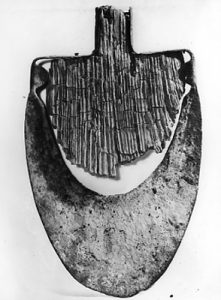
The township of Whiston is historically linked with coal mining, the first reference to which appeared in 1521. Many shafts were sunk around the area including those at Carr Colliery of 1760s; Whiston Colliery of 1802 (closed 1890); Halsnead Colliery of 1802 (closed 1895); but the most familiar pit within the Whiston Rural District was at Cronton Colliery which was begun in 1913, the first coal from which was raised in April 1915 (at this time it was called The Hulton Colliery Co.). The collieries made good use of branch lines constructed for ease of transportation to a widening market.
In the late 19th Century, the site of the former Whiston Colliery was developed. Opening in 1898 as the Whiston Metallic Brick Works (known as Tushingham’s), the company manufactured bricks made from a mixture of local clay and shale until its closure in the early 1970s.
Whiston township was also known for its pottery: the earliest reference being in the late 18th Century. The main area for this industry was in the west of the township leading into Huyton Quarry where one can find a present-day reminder in the old street name of Pottery Lane. Smaller industries included file and tool makers who provided items for the clock and watch industry in nearby Prescot.
Until the 19th Century, the religious faithful attended churches in either Huyton or Prescot but eventually a number of small chapels were built in Whiston to cater for those of a non-conformist persuasion. Firstly, a traditional Wesleyan Methodist Chapel was erected in 1832, followed by a Free United Methodist Chapel in 1879, and later in 1890, a Welsh Methodist Chapel was erected to provide a place of worship for the families of the Welsh miners who had settled here in large numbers.
Although the ancient cross of the township has not survived, it presumably occupied the site on the high ground at the junction of Dragon Lane and Cross Lane (formerly Stank Lane). This area became historically known as Whiston Cross.
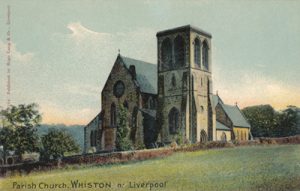
The consecration of St. Nicholas Parish Church took place 30th July 1868, on a site purchased and given by the then vicar of Huyton, the Rev. Ellis Ashton. The road on which it stands was originally called Tarbock Road but is now known as Windy Arbor Road. The following year in June 1869, part of the Whiston township together with part of the township of Tarbock, was formed into its own parish. The formation of the Whiston Rural District Council in 1874 brought about greater control of local affairs which had previously been dealt with by governing bodies in Prescot.
The local Roman Catholic Church of St. Luke in Shaw Lane was built in 1937 and a second one dedicated to St. Leo in Lickers Lane, although consecrated in 1977, contains pews from the old church of St. Augustine, Great Howard Street, Liverpool which are over 100 years old.
Prior to the construction of these new churches, the Catholic population would have attended either Portico Chapel, Eccleston, or the church of Our Lady Immaculate and St Joseph, in Prescot.
Whiston Village School, which was originally built in mid-1800s, was enlarged in 1900 to accommodate the children of a growing local population.
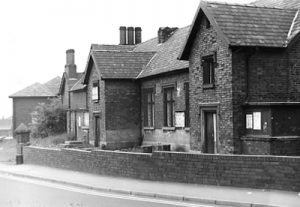
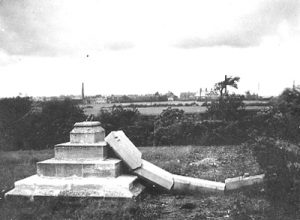
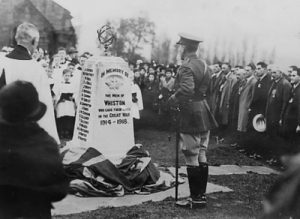
Following the Great War, a war memorial designed by Sir Giles Gilbert Scott was erected in the grounds of St. Nicholas Church to commemorate those connected with the parish who had lost their lives. Unfortunately, in 1928, the memorial was struck by lightning and collapsed in pieces. Being a tall structure, it was decided not to rebuild this design and eventually, it was replaced with a completely new style of war memorial, unveiled with ceremony in 1932. The memorial records the names of the fallen parishioners of the First World War. The names of those from the parish who served and fell during the Second World War were added to additional tablets at the base, following that conflict.
The most widely known present-day location in the township is Whiston Hospital located on Warrington Road (formerly Turnpike Road) and Dragon Lane. The original buildings of 1843 housed the Poor Law Institution: the Prescot Union Workhouse and Infirmary. Although the site has been enlarged and regenerated on a number of occasions since then, in 2006 a major transformation was begun. The old Victorian buildings were demolished and a more modern, multi-storey complex was constructed over a number of years. Opposite the hospital on Warrington Road, a multi-storey car park was built complete with a raised walkway, connecting the two above the roadway.
Close to the hospital in Stoney Lane, is the site of Stoves Ltd., gas appliance manufacturers that began production there in 1925. Although for periods trading under the names Newhome, Valor, Valor-Newhome, and finally being acquired by Glen Dimplex in 2000, it has always been known locally by its original name of Stoves Ltd.
The construction of the M57 and M62 motorways brought greater accessibility to the area and with it a need for developments in the hotel trade. Old place names have been used in recent times with the opening of new hotels around the area: The Chapel Brook and the Logwood Mill (now known as The Village Hotel) are prime examples of local links to the past.
Local government re-organisation in 1974 brought Whiston into the newly created Metropolitan Borough of Knowsley.
Transport links in the township were improved when British Rail opened Whiston Railway Station in October 1990, providing access to the rail network running between Liverpool Lime Street and Manchester Victoria and to Warrington Bank Quay.
Changes to secondary education took place in 2010 when Whiston Higher Side Comprehensive School (which opened in 1964) closed after 46 years. A second school, St Edmund Arrowsmith Catholic High School, Scotchbarn Lane, also closed. A new school (to accommodate 1,000 pupils and built under the Building Schools for the Future programme) was named St Edmund Arrowsmith Catholic Centre for Learning and was erected on vacant land behind the former Higher Side site. The school has since reverted back to its former name St Edmund Arrowsmith Catholic High School.
Under a government initiative to build new villages around the country, Knowsley Metropolitan Borough Council submitted detailed plans in 2016 for a proposed Halsnead Garden Village. The proposal for the Halsnead area which includes the old Cronton Colliery site became one of fourteen locations supported by government ministers in an announcement made in January 2017. On completion, the Halsnead Garden Village is set to deliver around 1,600 new homes, employment land, a new Halsnead Country Park and a new community.
A boost for the project came in January 2019 when £12m funding was pledged by the Liverpool City Region Combined Authority that will allow adequate improvements to be made to the road infrastructure surrounding the garden village site and also improvements to its access to Tarbock Island and thus to the local motorway network.
A local landmark was lost in late 2019 when the 18th Century Green Dragon public house located at the junction of Warrington Road and Dragon Lane was demolished.
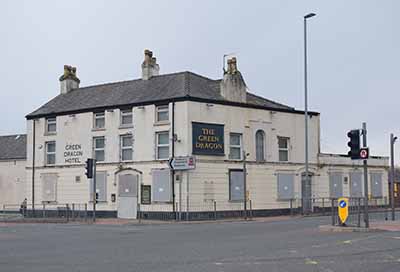
The Coronavirus pandemic in 2020 dominated the news for the whole year. A timeline of the events that occurred can be consulted here: COVID-19 National and Local timeline 2020
New COVID-19 ‘Smart’ testing site for anyone without symptoms who is unable to work at home opened at St Edmund Arrowsmith Catholic High School, Cumber Lane, 14th February 2021.
As the Coronavirus pandemic continued in 2021 with new variants appearing, a further timeline shows the changing situation throughout the year: COVID-19 National and Local timeline 2021
The first show homes of the new Elowen Garden Village located off Windy Arbor Road opened on 23rd March. This development is part of the greater Halsnead Garden Village project which aims to provide up to 1,600 new homes in the area. Plans for a further 350 homes have been approved to be built on land west of Fox’s Bank Lane, north of the M62 motorway. Planning approval for the new 28-acre Country Park on the former Cronton Colliery site was also granted in July 2021.
Ownership and management of both Whiston Junior Football Club, Windy Arbor Road and Prescot Angling Association and Mellor’s Anglers has been transferred from Whiston Town Council to Knowsley MBC in order to address environmental issues. Problems with duckweed and penny wort are affecting access for anglers at Mellor’s Pond and drainage alterations are required at the Whiston Junior Football Club ground to diminish instances of flooding on the playing surface.
The success of the UK’s vaccination programme meant that coronavirus restrictions were eased in 2022. A summary of COVID-19 information for the year can be found here: COVID-19 National and Local timeline 2022
Planning approval for 208 new houses on the Halsnead Garden Village was granted to Bloor Homes on 13th January 2023. The company have already built over 100 homes on the site.
The UK Government’s Emergency Alerts System is now live and will be used to warn people when lives are in danger, initially to warn of severe weather-related incidents including flooding and provide instructions how to respond to an alert. To check the system, a test took place at 3pm on Sunday 23rd April whereby most people received an official text message on their mobile phones.
The latest COVID-19 information can be found here: COVID-19 National and Local timeline 2023 (to end of May 2023)
